By Thomas Parker (Regular Contributor)
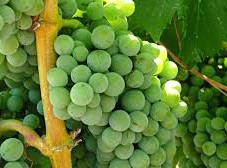
In vino veritas means “in wine there is truth.” Most of us take that to be a truth about ourselves and not wine, but imagine if by drinking wine you could taste truth literally, unlocking some mystery transmitted to the grapes from the soil they grew in. Now imagine if standing between you and that truth there was a cloying, syrupy mound of sweetness, enveloping it like a shroud, so that you had to lift it away to get at it.
That was at the essence of a recent article in the New York Times Magazine, entitled the “Wrath of Grapes,” which described how Rajat Parr and a group of like-minded California winemakers are bucking the practice of producing fruity, alcoholic wines.
These nonconformists harvest grapes that are less ripe with lower sugar, claiming to make wines lower in alcohol and more balanced than those of their neighbors. These wines, as their logic goes, avoid the blasting doses of fruit that would overshadow a wine’s more subtle aspects.
As s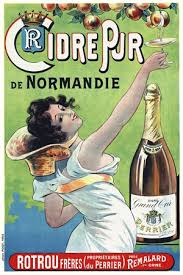 uch, the products are more representative of the land, or the “terroir” that they are produced on. Terroir, a French word derived from the Latin terra for “earth”, is used by enthusiasts to describe the effect that the geographic origin of a food or wine (and the quantity of sunlight, qualities of soil, rainfall, drainage, etc.) have on its flavors. If there is similarity between the expectations for the flavors typically produced in a specific place and the actual flavors produced by a wine or food, the latter is thought to be a pure, natural, and authentic expression of the terroir it was grown on.
uch, the products are more representative of the land, or the “terroir” that they are produced on. Terroir, a French word derived from the Latin terra for “earth”, is used by enthusiasts to describe the effect that the geographic origin of a food or wine (and the quantity of sunlight, qualities of soil, rainfall, drainage, etc.) have on its flavors. If there is similarity between the expectations for the flavors typically produced in a specific place and the actual flavors produced by a wine or food, the latter is thought to be a pure, natural, and authentic expression of the terroir it was grown on.
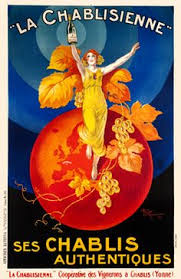 The conversation comparing ripe, fruity wines to more subdued terroir wines is interesting in itself but also demonstrates how arbitrary such terms as “pure and “authentic” have historically been in the context of food appreciation. Going back three hundred and fifty years in France to the court of Louis the XIV, for example, things were much different. Instead of constituting purity, terroir was the term used to designate “impurity.” It was a blemish of the earth conveyed by the imperfections of a particular place that a food came from.
The conversation comparing ripe, fruity wines to more subdued terroir wines is interesting in itself but also demonstrates how arbitrary such terms as “pure and “authentic” have historically been in the context of food appreciation. Going back three hundred and fifty years in France to the court of Louis the XIV, for example, things were much different. Instead of constituting purity, terroir was the term used to designate “impurity.” It was a blemish of the earth conveyed by the imperfections of a particular place that a food came from.
Connoisseurs sought out foods that did not smell of terroir, and built their reputations on being able to detect flaws in foods “corrupted” by the terroir of their origin. Food smelling of the terroir was not a positive trait, as Parr would have it, but an imperfection, contaminating the essence of the fruit.
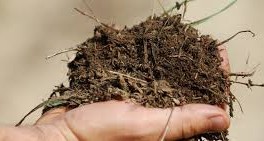 This anecdote shows how historically bounded characterizations such as “pure” and “natural” are in terms of food, but even more surprising how these terms often originate outside the world of cuisine all together. In the above example, seventeenth-century French food customs evolved from a reflection on the purity of the French language and the broader structures of political and social power that shaped it. Within the prestigious ranks of Louis XIV’s court society, people sought to speak without a provincial accent. Those who betrayed provincial origins were said to be unrefined interlopers in the court, “smelling of the terroir.”
This anecdote shows how historically bounded characterizations such as “pure” and “natural” are in terms of food, but even more surprising how these terms often originate outside the world of cuisine all together. In the above example, seventeenth-century French food customs evolved from a reflection on the purity of the French language and the broader structures of political and social power that shaped it. Within the prestigious ranks of Louis XIV’s court society, people sought to speak without a provincial accent. Those who betrayed provincial origins were said to be unrefined interlopers in the court, “smelling of the terroir.”
The attitude toward language became reflected in tastes in food and wine. People attempted to demonstrate their personal refinement and purity by s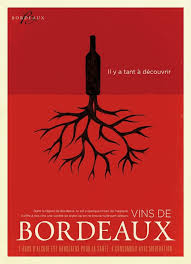 eeking out the so-called “purest,” most neutral, and most “natural” foods: those showing only unadulterated fruit, untainted by any characteristic of the terroir.
eeking out the so-called “purest,” most neutral, and most “natural” foods: those showing only unadulterated fruit, untainted by any characteristic of the terroir.
Let us compare this phenomenon to the stigma placed on regional accents today in the United States. Mostly, people don’t wish to possess a Brooklyn accent, a Jersey accent, a Southern accent or a Midwestern accent. People don’t want their spoken tongues to reflect the terroir and, until recently, most didn’t ask for that in the taste of their wines either.
 Thomas Parker is our newest Regular Contributor at Wonders & Marvels. He teaches French and Francophone literature at Vassar College, and has an extensive background in wine. He took a year off to work in Champagne, France while in college, and then worked for an importer while managing a wine store before going back to graduate school. His latest book, Tasting Terroir: The History of an Idea (University of California Press, Berkeley), was published in 2015.
Thomas Parker is our newest Regular Contributor at Wonders & Marvels. He teaches French and Francophone literature at Vassar College, and has an extensive background in wine. He took a year off to work in Champagne, France while in college, and then worked for an importer while managing a wine store before going back to graduate school. His latest book, Tasting Terroir: The History of an Idea (University of California Press, Berkeley), was published in 2015.
